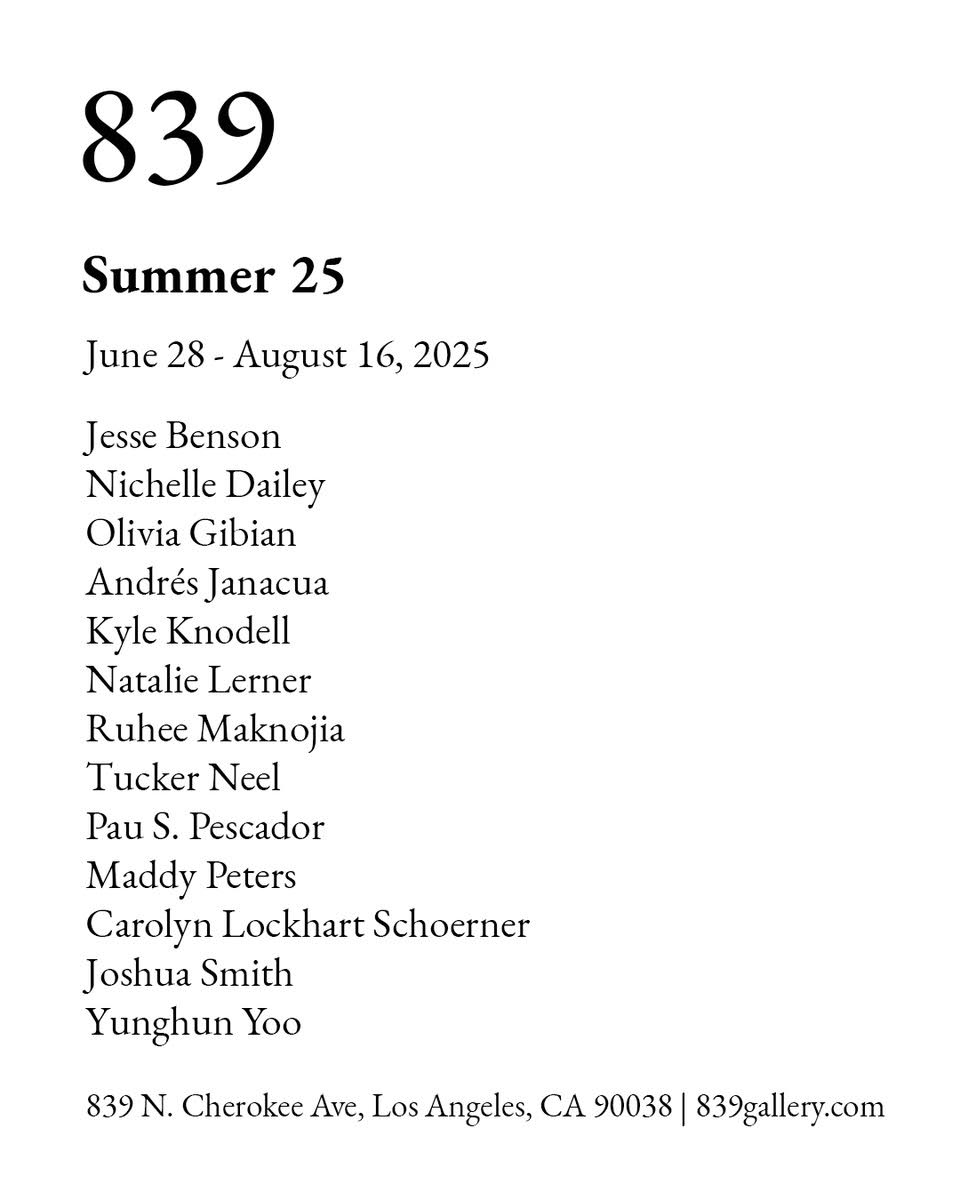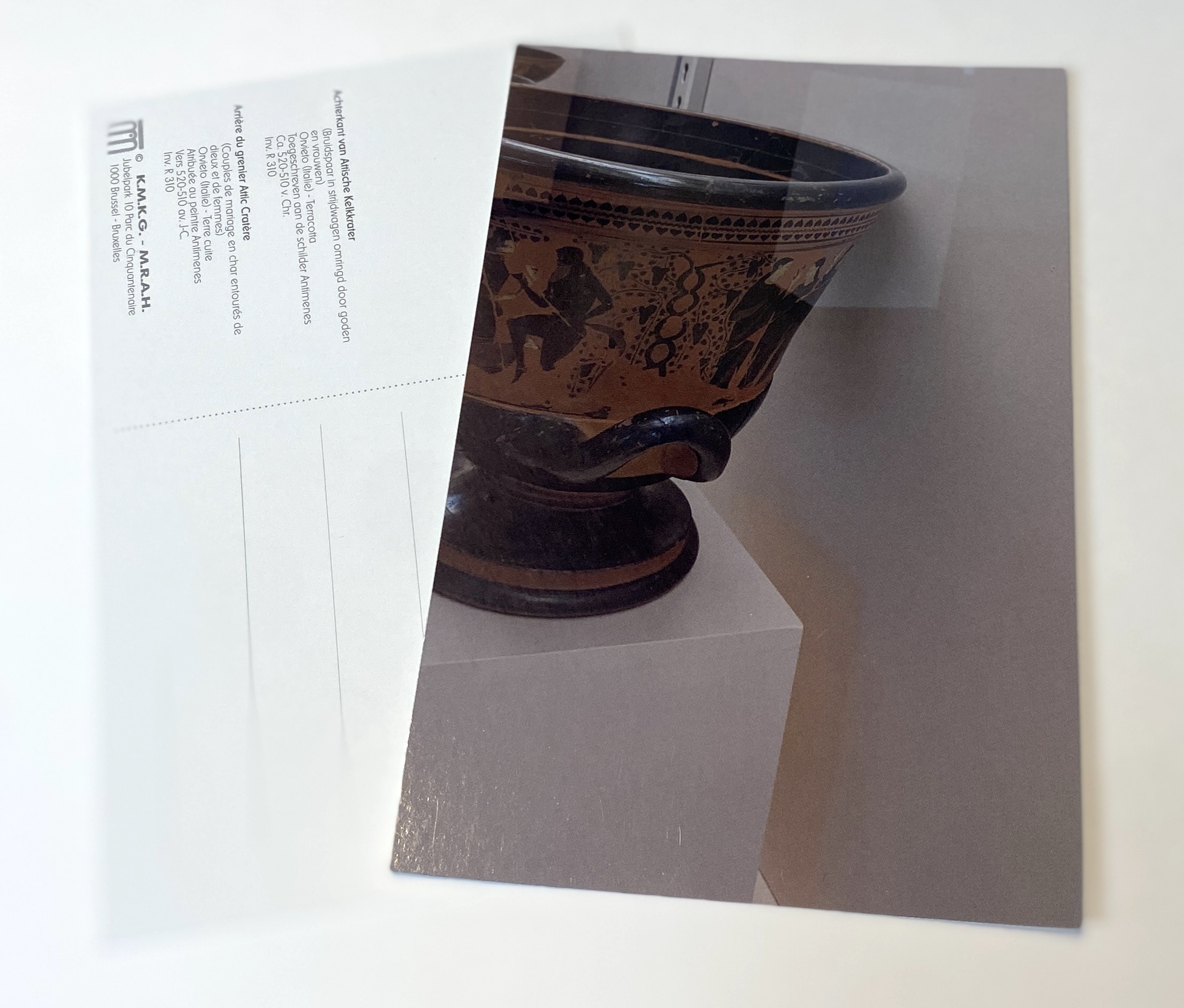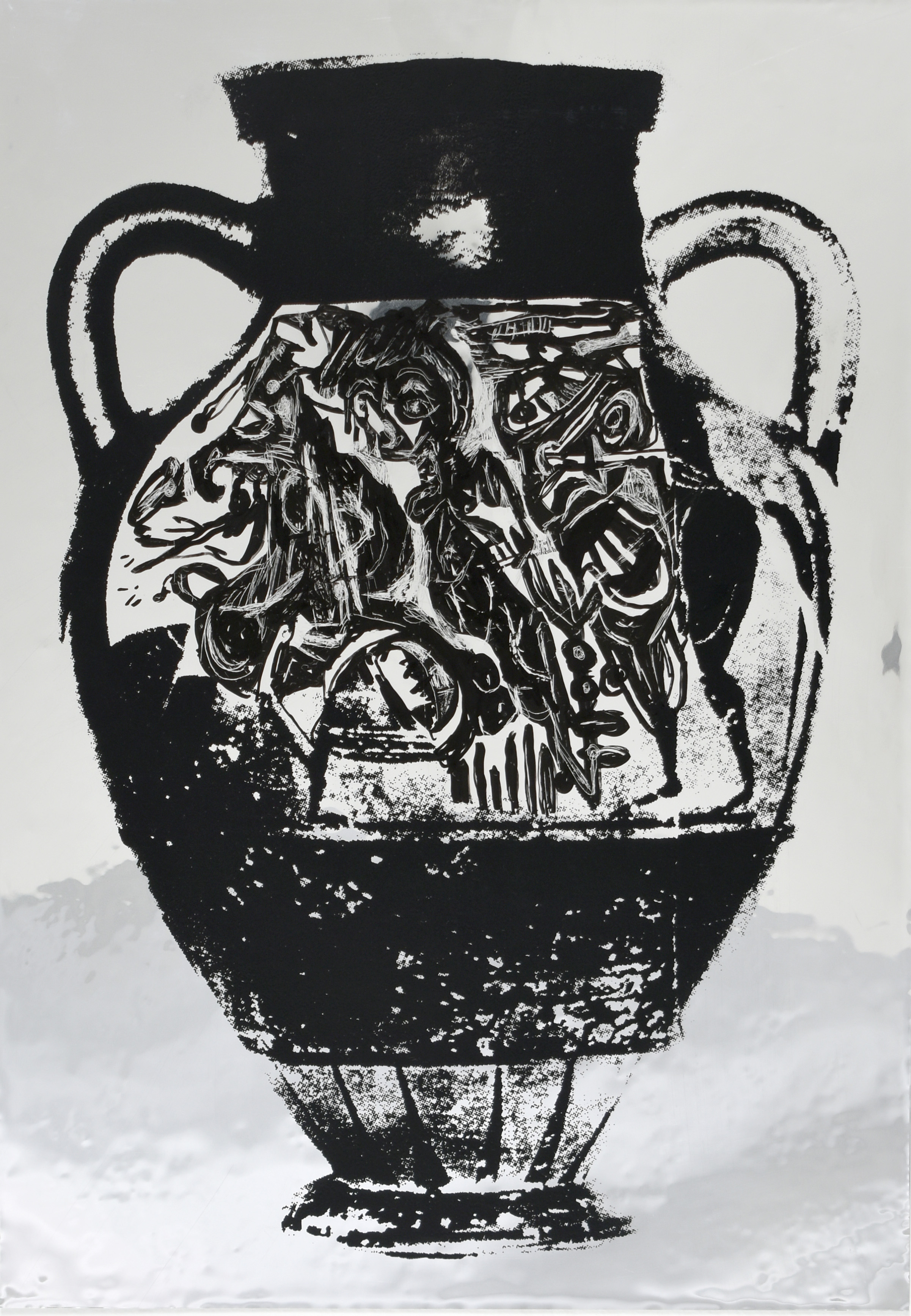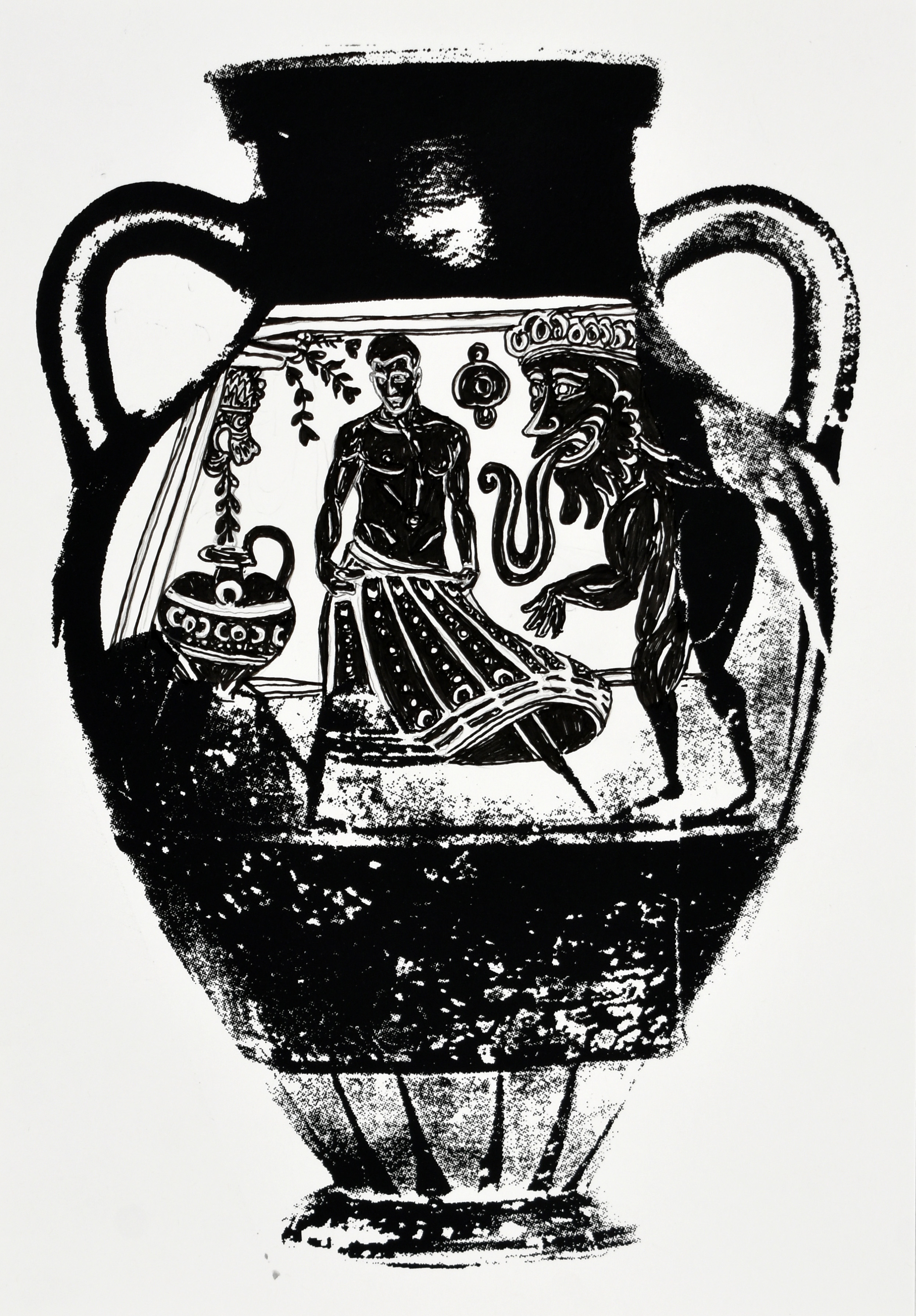The Rim of the World Road Concert - July 26-27, 2025
80+ performances and installations along the Rim of the World Highway
The Rim of the World Road Concert will show site-specific performances, readings, artworks, interventions, participatory projects, and happenings along the Rim of the World highway and in adjacent San Bernardino Mountain communities on the weekend of July 26-27, 2025.
During this weekend-long, free event, invited artists, writers, and musicians from on and off the mountain will create original artworks and performances inspired by the Crestline, Lake Arrowhead, and Running Springs areas.
Created in 2008 by writer and artist Stephen van Dyck, the Road Concerts has presented work from more than 300 participating artists, seeking to investigate the possibilities of Southern California’s lengthy roads as sites for artistic exploration.
David Allen Burns, artist and resident of Crestline, and Jennifer Kane, former executive director of the San Bernardino County Arts Council, initiated conversations with van Dyck to launch an eighth iteration of the Road Concerts in San Bernardino County to promote art, performance, and new engagement with the mountain communities.
Overlooking the vast Inland Valley, with numerous lookouts, businesses, and other public spaces, the highway has the potential to serve as a stage for interconnection and dialogue, asking questions like: how can we generate a new kind of public experience to find meaning and bring attention to a collection of less obvious destinations?
The San Bernardino Mountains have a rich history that becomes visible along the highway: iconic natural landmarks, scenic lookouts, mountain canyons with natural spring water, one-time homes of famous stars, a wildfire lookout tower on Strawberry Peak, a year-round Santa-themed amusement park, a mosque in the forest, and the San Andreas Fault. Views along the Rim of the World highway evoke themes of car culture, tourism, and sprawl. Also visible is the impact of wildfire and deforestation. Communities on the mountain are also deeply concerned with land use, water rights, invasive and lost species, and recent local tragedies.
Additionally, through an open call process, the Rim of the World Road Concert brings together art school graduates, working artists, local residents and others to realize a broad range of interactions with selected sites. The Rim of the World Road Concert invites its audiences to take a break from their everyday lives—work, leisure activities, and all their other usual types of movement—and let themselves be drawn into unexpected encounters in public parks spaces.
On Saturday, July 26, and Sunday, July 27, 2025, audience members will be invited to drive along the Rim of the World highway and through adjacent communities to take a break from their everyday lives—work, leisure activities, and all their other usual types of movement—and let themselves be drawn into unexpected art encounters along the highway and nearby terrain. Through an open call process, the Road Concerts brings together art school graduates, working artists, local residents and other artists, writers, musicians, and performers, to realize a broad array of kinds of interactions with the sites.
Participating artists include: Akina Cox, Alex Hancook, Ali Prosch, Amarantha Dyuaxxchs, Amina Cain, Andrew Weathers, Anya Liftig, Ashley Morgan, Beau Pender, Beth Fiedorek, Brian David Cinadr, Cedric Tai, Chris Scott Cole & Stephen Cole, Chris Wawrinofsky, Claudia Rios, Corrie Siegel, Crestline Creatrix Matrix, Cristine’s Twin, Crystal Araiza, Dakota Noot & Christopher Velasco, David Rhodes, Dina Dalton, DJ PK, Duck & Pisaster Gallery and Surplus, Elizabeth Folk, Emery Caleb Martin, Emily Geminder, Erin Heidenreich, Faith Purvey, Gabrielle Hovendon, Greater & Grander Artist Collective, Hannah O'Brien, High Impact, Ilana Waniuk & Myra Hinrichs, Irene Georgia Tsatsos, J. Keith van Straaten, Jack Herscowitz, Janeva Zentz, Jay Erker, Jay Lynn Gomez, Jen Bruce, Jonathan Gomez, Jose Trejo Maya, K. Bradford, KDZU, kim darling, Kira Doutt, KUYRA, Laurel Antur, Luke Aleckson, LuluBelle’s Coffee House & Bakery, M.A. Tiesenga, Maica Duran, Manuel Macias, Margie Schnibbe, Michael J. Gonzales, Mixed Signals, Moriah Conedy, Myriam Gurba, Odyssey Adventure Co., Pedro Aceves, Philip Mantione, Planet Queer, Rachel Manija Brown, Rebecca Maloof, Rim of the World Poets, Robert Holliday, Rodrigo Arruda, Running Springs Farmers Market & Artisan Faire, Scott Froschauer, Semi-Tropic Spiritualists, Sepand Shahab, Spade & Spatula Artist Collective, Taylor Thomas, The Greater & Grander Artist Collective, Tori McCrea & Karin Johansson, Travis D, Trevor Coopersmith, Tucker Neel, Twentieth-Century Creatures, Vena & Hernandez, Vladimir Shabanov & Irina Shabanova, Yvette Nicole Kolodji, Zeina Baltagi & Kirk Pickler.
We are working with or have the support of the Rim of the World Parks and Recreation District, Arts Connection - The Arts Council of San Bernardino County, California State Parks, San Bernardino County Museum, Cal State San Bernardino, Redlands University SURF program, Crestline Chamber of Commerce, Lake Arrowhead Chamber Of Commerce, Twin Peaks Farmers Market, Lake Arrowhead Brewing Co., Mountain History Museum, Spade & Spatula, Littlebear Bottleshop, Mystic Mountain Music, Paper & Clay Bookshop & more!
A downloadable map and program will be accessible both online (www.theroadconcerts.com) and at stations along and around the event area starting a week before the event.
July 26-27, 2025
FREE
Summer 25
839
June 28 – August 16, 2025
Opening Saturday, June 28, 5-8 pm
839 N Cherokee Ave., Los Angeles, California 90038
839gallery.com
Artists
Jesse Benson
Olivia Gibian
Andrés Janacua
Kyle Knodell
Natalie Lerner
Ruhee Maknojia
Tucker Neel
Pau S. Pescador
Maddy Peters
Carolyn Lockhart Schoerner
Joshua Smith
Yunghun Yoo
About
Summer 25 is the gallery’s second annual group exhibition, gathering artists represented by 839 alongside invited collaborators and friends. The show isn’t shaped by a fixed theme, evolving instead out of ongoing conversations, growing community, and the rhythms of the artists’ own practices. Presented in the shadow of escalating authoritarian violence, from Los Angeles to Palestine, we continue to believe in progressive expression and the reimagining of public space.
For images and inquiries: info@839gallery.com
839gallery.com
@839gallery
839 N. Cherokee Ave
Los Angeles, CA 90038
Open Saturdays, 12-6 pm and by appointment
Accessibility and Parking: For the opening reception, we recommend public transit or parking in front of Bancroft Middle School on Las Palmas Ave., a short walk from the gallery. Please note that the gallery has a porch with four steps.
![]()
House of Leather Sneak Peek and Panel Discussion
![]()
2024 Tom of Finland Art & Culture Festival
Saturday 30th November
11:30a - 1:00p
Hotel Indigo
899 Francisco Street, Los Angeles, CA 90017
This programme will screen select scenes from a new feature-length documentary entitled House of Leather followed by a panel discussion featuring ToFF Artist-in-Residence alumni and filmmaker Jamison Rockmore, film subject and Artist-in-Residence alumni Oat Montien, and moderated by art writer Tucker Neel.
Festival Programhttps://www.tomoffinland.org/wp-content/uploads/2024/11/Program_LA_2024_24_11_26.pdf
Tucker Neel
Looking For The Backside, Volume 1
OGGE
Rue Verwée 26, 1030 Schaerbeek, Belgium
ogge1030.com
May 11 - August 10, 2024
Opening Reception Saturday, May 11,18:00 - 20:00
![Tucker Neel, Postcard for The Royal Museum of Fine Arts in Brussels, Belgium (Inv. R. 310), 2024]()
![Tucker Neel, Selection of Looking For The Backside - Museum Postcards, 2006-2024]()
![Tucker Neel, Display Proposal for The Royal Museum of Fine Arts in Brussels, Belgium (Vitrine 1), 2024]()
![Tucker Neel, Display Proposal for The Royal Museum of Fine Arts in Brussels, Belgium (Vitrine 2), 2024]()
![Tucker Neel, 10990.M.ND.01, screen print on paper, 9x13", 2024]()
![Tucker Neel, 10990.M.DR.01, screen print and acrylic drawing on paper, 9x13", 2024]()
![Tucker Neel, 10990.P.ND.01, screen print on mylar, 9x13", 2024]()
![Tucker Neel, 10990.P.DR.01, screen print and acrylic drawing on paper, 9x13", 2024]()
About
Since their inception, encyclopedic museums of art and history have featured exhibitions of ancient Greek pottery. Crafted centuries ago, these terracotta artifacts were intended as three-dimensional objects, designed to be observed from all angles. However, in contemporary museums, they are often positioned with one side facing the back of a display case, obscuring half of their entirety from sight.
Tucker Neel finds this phenomenon fascinating because it illustrates how ideology functions through omission; what institutions choose to hide can say more about who they are than what they reveal. Neel has spent the past decade documenting ancient Greek pottery collections in museums around the world from his perspective, pressing his face against walls and cabinets to capture images with his smartphone in an effort to see each vase in its entirety.
During this process, he uncovered how museums conceal elements they wish to keep hidden. Frequently, vase arrangements favor men over women, heroes over ordinary individuals, figuration over decoration. Sexual or grotesque scenes are repeatedly left in shadows. Cracks and awkward restorations are obscured to make certain vases appear more artistically cohesive. Intact sections receive attention while their broken counterparts remain unseen.
These curatorial choices reflect which people, narratives, imagery, perspectives, and ideals museums prioritize. The preference for one side, one way of seeing over another, extends from the museum vitrine into the broader culture.
In Ogge’s project space, Neel seeks to highlight his findings through a digital slideshow documenting his attempt to photograph the back of every ancient vase in Greco-Roman wing of The Art and History Museum in Brussels, Belgium. In response to the hidden backside problem, he presents two reflective posters as proposals for a redesign of the collection, suggesting that museums could simply install mirrors to provide a better view.
The installation also features a replica Greek amphora Neel bought on eBay, painted in his studio in Los Angeles, and then shattered into pieces before transporting it in his luggage to Ogge, where he reassembled it using hot glue. Such an absurd activity recalls how important artifacts were - and are - taken, broken, transported, remade, and sold as part of a questionable global antiquities marketplace.
In another window, visitors can view Neel’s screen prints on both paper and reflective mylar of vases selected from The Brussels Art and History Museum’s online archive. Some prints include accompanying drawings, while others do not. These works celebrate the creative potential found in imperfection, highlighting how the empty spaces within ancient pottery prompt viewers to engage their imagination to visually complete each vase.
You can create your own artwork from Neel’s screenprint series by purchasing affordable prints on paper and/or mylar. Simply email ollyorneel@gmail.com or stop by Ogge and ring the doorbell.
For more info visit ogge1030.com
80+ performances and installations along the Rim of the World Highway
The Rim of the World Road Concert will show site-specific performances, readings, artworks, interventions, participatory projects, and happenings along the Rim of the World highway and in adjacent San Bernardino Mountain communities on the weekend of July 26-27, 2025.
During this weekend-long, free event, invited artists, writers, and musicians from on and off the mountain will create original artworks and performances inspired by the Crestline, Lake Arrowhead, and Running Springs areas.
Created in 2008 by writer and artist Stephen van Dyck, the Road Concerts has presented work from more than 300 participating artists, seeking to investigate the possibilities of Southern California’s lengthy roads as sites for artistic exploration.
David Allen Burns, artist and resident of Crestline, and Jennifer Kane, former executive director of the San Bernardino County Arts Council, initiated conversations with van Dyck to launch an eighth iteration of the Road Concerts in San Bernardino County to promote art, performance, and new engagement with the mountain communities.
Overlooking the vast Inland Valley, with numerous lookouts, businesses, and other public spaces, the highway has the potential to serve as a stage for interconnection and dialogue, asking questions like: how can we generate a new kind of public experience to find meaning and bring attention to a collection of less obvious destinations?
The San Bernardino Mountains have a rich history that becomes visible along the highway: iconic natural landmarks, scenic lookouts, mountain canyons with natural spring water, one-time homes of famous stars, a wildfire lookout tower on Strawberry Peak, a year-round Santa-themed amusement park, a mosque in the forest, and the San Andreas Fault. Views along the Rim of the World highway evoke themes of car culture, tourism, and sprawl. Also visible is the impact of wildfire and deforestation. Communities on the mountain are also deeply concerned with land use, water rights, invasive and lost species, and recent local tragedies.
Additionally, through an open call process, the Rim of the World Road Concert brings together art school graduates, working artists, local residents and others to realize a broad range of interactions with selected sites. The Rim of the World Road Concert invites its audiences to take a break from their everyday lives—work, leisure activities, and all their other usual types of movement—and let themselves be drawn into unexpected encounters in public parks spaces.
On Saturday, July 26, and Sunday, July 27, 2025, audience members will be invited to drive along the Rim of the World highway and through adjacent communities to take a break from their everyday lives—work, leisure activities, and all their other usual types of movement—and let themselves be drawn into unexpected art encounters along the highway and nearby terrain. Through an open call process, the Road Concerts brings together art school graduates, working artists, local residents and other artists, writers, musicians, and performers, to realize a broad array of kinds of interactions with the sites.
Participating artists include: Akina Cox, Alex Hancook, Ali Prosch, Amarantha Dyuaxxchs, Amina Cain, Andrew Weathers, Anya Liftig, Ashley Morgan, Beau Pender, Beth Fiedorek, Brian David Cinadr, Cedric Tai, Chris Scott Cole & Stephen Cole, Chris Wawrinofsky, Claudia Rios, Corrie Siegel, Crestline Creatrix Matrix, Cristine’s Twin, Crystal Araiza, Dakota Noot & Christopher Velasco, David Rhodes, Dina Dalton, DJ PK, Duck & Pisaster Gallery and Surplus, Elizabeth Folk, Emery Caleb Martin, Emily Geminder, Erin Heidenreich, Faith Purvey, Gabrielle Hovendon, Greater & Grander Artist Collective, Hannah O'Brien, High Impact, Ilana Waniuk & Myra Hinrichs, Irene Georgia Tsatsos, J. Keith van Straaten, Jack Herscowitz, Janeva Zentz, Jay Erker, Jay Lynn Gomez, Jen Bruce, Jonathan Gomez, Jose Trejo Maya, K. Bradford, KDZU, kim darling, Kira Doutt, KUYRA, Laurel Antur, Luke Aleckson, LuluBelle’s Coffee House & Bakery, M.A. Tiesenga, Maica Duran, Manuel Macias, Margie Schnibbe, Michael J. Gonzales, Mixed Signals, Moriah Conedy, Myriam Gurba, Odyssey Adventure Co., Pedro Aceves, Philip Mantione, Planet Queer, Rachel Manija Brown, Rebecca Maloof, Rim of the World Poets, Robert Holliday, Rodrigo Arruda, Running Springs Farmers Market & Artisan Faire, Scott Froschauer, Semi-Tropic Spiritualists, Sepand Shahab, Spade & Spatula Artist Collective, Taylor Thomas, The Greater & Grander Artist Collective, Tori McCrea & Karin Johansson, Travis D, Trevor Coopersmith, Tucker Neel, Twentieth-Century Creatures, Vena & Hernandez, Vladimir Shabanov & Irina Shabanova, Yvette Nicole Kolodji, Zeina Baltagi & Kirk Pickler.
We are working with or have the support of the Rim of the World Parks and Recreation District, Arts Connection - The Arts Council of San Bernardino County, California State Parks, San Bernardino County Museum, Cal State San Bernardino, Redlands University SURF program, Crestline Chamber of Commerce, Lake Arrowhead Chamber Of Commerce, Twin Peaks Farmers Market, Lake Arrowhead Brewing Co., Mountain History Museum, Spade & Spatula, Littlebear Bottleshop, Mystic Mountain Music, Paper & Clay Bookshop & more!
A downloadable map and program will be accessible both online (www.theroadconcerts.com) and at stations along and around the event area starting a week before the event.
July 26-27, 2025
FREE
Summer 25
839
June 28 – August 16, 2025
Opening Saturday, June 28, 5-8 pm
839 N Cherokee Ave., Los Angeles, California 90038
839gallery.com
Artists
Jesse Benson
Olivia Gibian
Andrés Janacua
Kyle Knodell
Natalie Lerner
Ruhee Maknojia
Tucker Neel
Pau S. Pescador
Maddy Peters
Carolyn Lockhart Schoerner
Joshua Smith
Yunghun Yoo
About
Summer 25 is the gallery’s second annual group exhibition, gathering artists represented by 839 alongside invited collaborators and friends. The show isn’t shaped by a fixed theme, evolving instead out of ongoing conversations, growing community, and the rhythms of the artists’ own practices. Presented in the shadow of escalating authoritarian violence, from Los Angeles to Palestine, we continue to believe in progressive expression and the reimagining of public space.
For images and inquiries: info@839gallery.com
839gallery.com
@839gallery
839 N. Cherokee Ave
Los Angeles, CA 90038
Open Saturdays, 12-6 pm and by appointment
Accessibility and Parking: For the opening reception, we recommend public transit or parking in front of Bancroft Middle School on Las Palmas Ave., a short walk from the gallery. Please note that the gallery has a porch with four steps.

House of Leather Sneak Peek and Panel Discussion

2024 Tom of Finland Art & Culture Festival
Saturday 30th November
11:30a - 1:00p
Hotel Indigo
899 Francisco Street, Los Angeles, CA 90017
This programme will screen select scenes from a new feature-length documentary entitled House of Leather followed by a panel discussion featuring ToFF Artist-in-Residence alumni and filmmaker Jamison Rockmore, film subject and Artist-in-Residence alumni Oat Montien, and moderated by art writer Tucker Neel.
Festival Programhttps://www.tomoffinland.org/wp-content/uploads/2024/11/Program_LA_2024_24_11_26.pdf
Tucker Neel
Looking For The Backside, Volume 1
OGGE
Rue Verwée 26, 1030 Schaerbeek, Belgium
ogge1030.com
May 11 - August 10, 2024
Opening Reception Saturday, May 11,18:00 - 20:00








About
Since their inception, encyclopedic museums of art and history have featured exhibitions of ancient Greek pottery. Crafted centuries ago, these terracotta artifacts were intended as three-dimensional objects, designed to be observed from all angles. However, in contemporary museums, they are often positioned with one side facing the back of a display case, obscuring half of their entirety from sight.
Tucker Neel finds this phenomenon fascinating because it illustrates how ideology functions through omission; what institutions choose to hide can say more about who they are than what they reveal. Neel has spent the past decade documenting ancient Greek pottery collections in museums around the world from his perspective, pressing his face against walls and cabinets to capture images with his smartphone in an effort to see each vase in its entirety.
During this process, he uncovered how museums conceal elements they wish to keep hidden. Frequently, vase arrangements favor men over women, heroes over ordinary individuals, figuration over decoration. Sexual or grotesque scenes are repeatedly left in shadows. Cracks and awkward restorations are obscured to make certain vases appear more artistically cohesive. Intact sections receive attention while their broken counterparts remain unseen.
These curatorial choices reflect which people, narratives, imagery, perspectives, and ideals museums prioritize. The preference for one side, one way of seeing over another, extends from the museum vitrine into the broader culture.
In Ogge’s project space, Neel seeks to highlight his findings through a digital slideshow documenting his attempt to photograph the back of every ancient vase in Greco-Roman wing of The Art and History Museum in Brussels, Belgium. In response to the hidden backside problem, he presents two reflective posters as proposals for a redesign of the collection, suggesting that museums could simply install mirrors to provide a better view.
The installation also features a replica Greek amphora Neel bought on eBay, painted in his studio in Los Angeles, and then shattered into pieces before transporting it in his luggage to Ogge, where he reassembled it using hot glue. Such an absurd activity recalls how important artifacts were - and are - taken, broken, transported, remade, and sold as part of a questionable global antiquities marketplace.
In another window, visitors can view Neel’s screen prints on both paper and reflective mylar of vases selected from The Brussels Art and History Museum’s online archive. Some prints include accompanying drawings, while others do not. These works celebrate the creative potential found in imperfection, highlighting how the empty spaces within ancient pottery prompt viewers to engage their imagination to visually complete each vase.
You can create your own artwork from Neel’s screenprint series by purchasing affordable prints on paper and/or mylar. Simply email ollyorneel@gmail.com or stop by Ogge and ring the doorbell.
For more info visit ogge1030.com
©2024 Tucker Neel. All rights reserved.